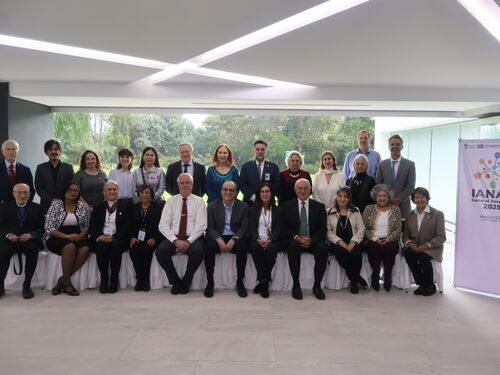In Fighting the COVID-19 Pandemic, Disease Surveillance, Testing, and Contact Tracing Likely Here to Stay
Feature Story
Last update September 23, 2020
Disease surveillance, testing, and contact tracing are among the best public health tools available to protect ourselves and our communities during the COVID-19 pandemic, said panelists during a recent COVID-19 Conversations webinar, hosted by the National Academy of Medicine and American Public Health Association.
“Because of COVID-19, a lot of people now appreciate the value of public health,” said moderator Karen DeSalvo, chief health officer at Google.
The three highlighted strategies (surveillance, testing, and contact tracing) will be crucial not only before the COVID-19 vaccine arrives but also in the aftermath, as we prepare for the next public health emergency, she said.
“Don’t assume that when a vaccine gets here, it’ll be back to normal,” said Michael Osterholm, director of the Center for Infectious Disease Research and Policy at the University of Minnesota. “I don’t see us leaving COVID-19 behind. I see us managing life differently.”
As COVID-19 collides with flu season, surveillance — the monitoring of disease activity at local, state, and national levels — will be especially important. However, it must work in tandem with testing.
“In Minnesota, bars and restaurants have been a major source of outbreaks, and only through surveillance can we understand that,” said Osterholm. “But if people won’t participate in contact tracing or refuse to get tested, that presents bigger challenges. I think we’re shifting from a problem of not enough tests, to not enough people who are willing to take them.”
Panelists also examined the question of who to test, when, and how often. This has consumed professor Martin Burke, who was charged with scaling a testing program for a student population of 50,000 at University of Illinois, Urbana-Champaign, as well as the faculty and staff.
“Our modeling told us that if we tested everyone twice a week, while requiring masks and social distancing, we’d be able to safely reopen and stay open this fall,” said Burke.
Burke had to do some pivoting to make that happen — from transforming a veterinary lab to a human testing facility, to replacing nasal swab tests with less invasive saliva-based tests.
“For our large university community, our biggest lesson is that fast, frequent testing is key,” said Burke. “Test results come back in hours, rather than days, and we launched an app to deliver those results in a secure, HIPAA-compliant way.”
The University of Illinois also had to think beyond its campus and consider the surrounding community in its efforts to mitigate the spread of COVID-19. Using the app, students can present their test results to not only gain access to campus buildings and activities but to area businesses as well, which has helped boost the local economy.
Testing and surveillance are also powerful supplements to contact tracing, a core component of the COVID-19 response in Washington, D.C.
“The data you collect as part of contact tracing becomes part of your surveillance data, and helps us understand which contacts became positive cases,” said LaQuandra Nesbitt, director of the D.C. Department of Health. “And the availability of tests and testing sites could help or impede our contact tracing efforts.”
D.C. recently began piloting home visits, to reach individuals who are not answering contact tracing questions by phone.
“Home visits are a tried-and-true approach from our programs in other areas, like maternal health,” said Nesbitt. “Some people have complex needs that can be better met by in-person engagement.”
A major point of pride for Nesbitt is that nearly all of D.C.’s contact tracers are residents of the city, and many are bilingual. Having credible hyper-local messengers has been critical for building trust — a fundamental foundation for any public health strategy, she said.
Burke, the University of Illinois professor, added that every community needs an anchor institution throughout a public health emergency. “Our university has kind of been that anchor, but it can be a faith-based organization, or the firehouse where you provide testing. Find places where people inherently have trust, and build them up.”
Further reading:



